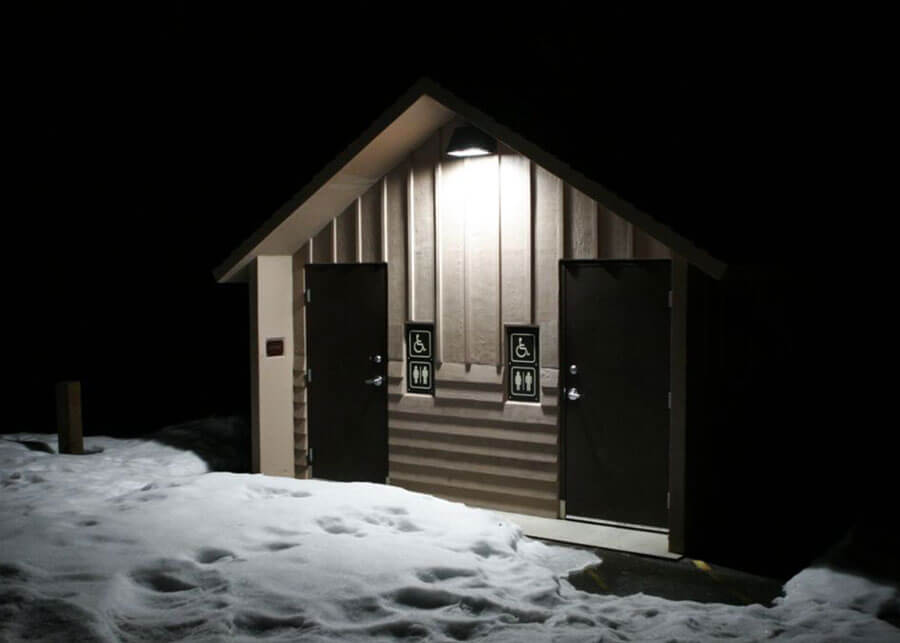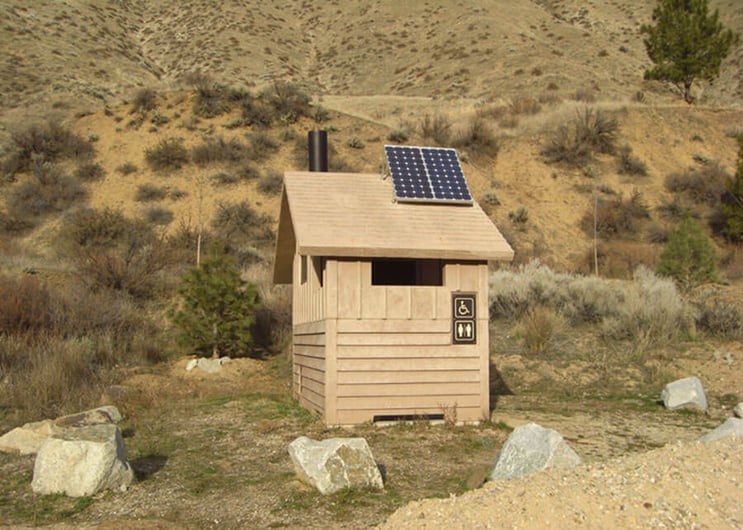Remote restrooms are installed in many parks, playgrounds, and recreation facilities. These remote restrooms are for people visiting a park to help provide sanitation to people visiting the parks. Installing solar building structure lighting systems allows these facilities to be well illuminated if proper lighting from skylights or windows is not available. This off-grid solution allows for remote installation and lowers costs for the parks department.
These restrooms are often located in the middle of a campground or state/federal park. Usually, the electrical grid is not available in these remote locations, and bringing in traditional electricity is costly and will damage much of the surrounding landscapes and hardscapes. Solar lighting can be used at the restroom location without the need for an electrical grid.

The solar panels are typically installed on a roof facing south to generate electricity during the day. The energy produced by the solar panels is stored within a battery or two. The battery cabinet is generally installed inside of the restroom structure but also sometimes on an outside wall.
The lights operate one of two ways, either by a motion sensor or by using a spring-loaded timer. The motion sensors allow the lights only to work when motion is detected for a set period, say for 5 minutes after no more motion is detected. The spring-loaded timer is usually set to a 20-minute maximum with a range of times between. Depending on how busy the restroom facility is will depend on what controls are used.
Remote restroom buildings need lighting for both convenience and security purposes. Exterior lighting is used to help visitors locate the buildings at night. Wall pack fixtures, which are full cutoff fixtures not to disturb the wildlife or have light pollution, are used for exterior building lighting and are installed over the entrances. This type of lighting provides safety to people coming and going from the restroom to see other people or obstacles in the area.

Interior lighting is utilized by people using the facilities. Canopy fixtures are installed for the interior of the restroom and can illuminate only a section or the entire room, depending on the layout. A single canopy fixture can illuminate a 20' square area in most cases with an 8-10' mounting height. If the building is larger, additional canopy fixtures can operate off the same solar power assembly as long as the solar power system is sized appropriately.
The lighting also includes the added benefit of deterring nighttime vandalism, which sometimes becomes a problem at these locations. Security can easily spot people in the area when doing rounds, and others can see if someone is up to something. LEDs provide excellent visibility as they provide lighting that is closer to daylight.
Solar parking lot, pathway, and area lighting are also easily installed in the nearby area as well. These lights provide plenty of illumination to the areas around a remote restroom facility to allow people to see their surroundings as they come and go at night. These systems work well together, and since each solar system is designed separately, no matter the installation, the solar should work flawlessly.
Solar restroom facility lighting provides the necessary combination of availability, performance, convenience, and security for all remote restroom needs. These are the best option for remote locations without trenching in standard grid power, reducing the damage to surrounding landscapes. In addition, this offers a more sustainable and lower-cost solution with little to no maintenance over the installation's lifespan.


